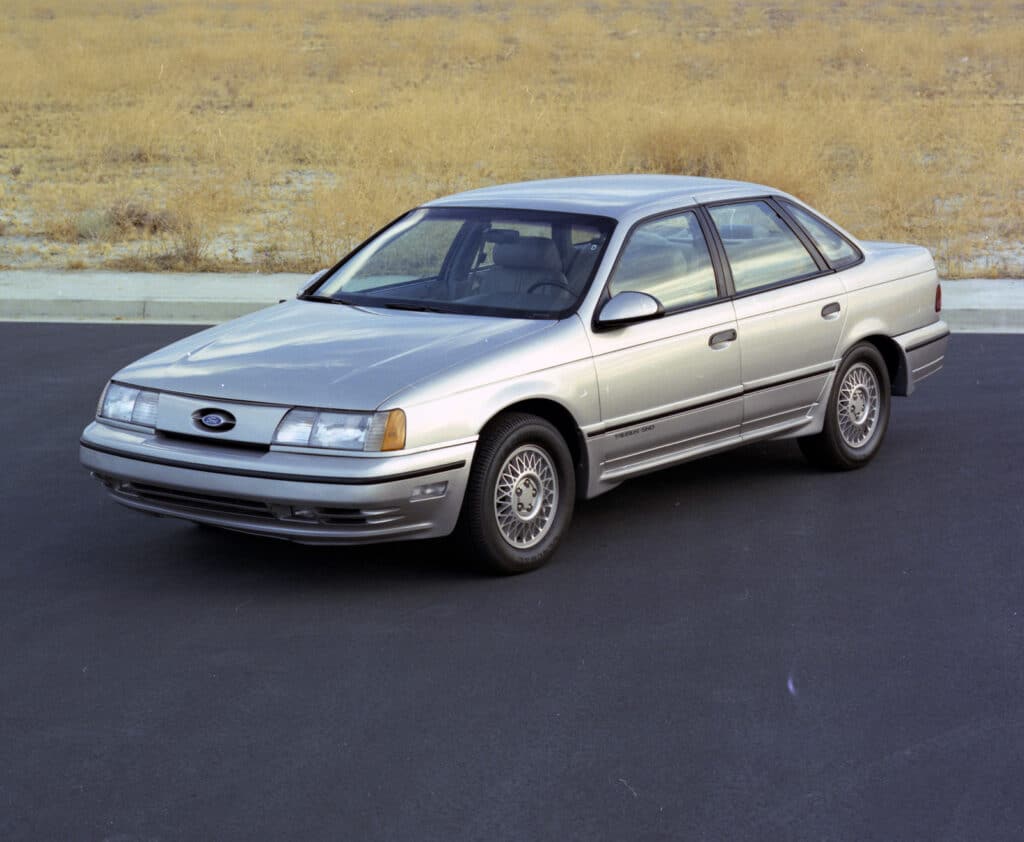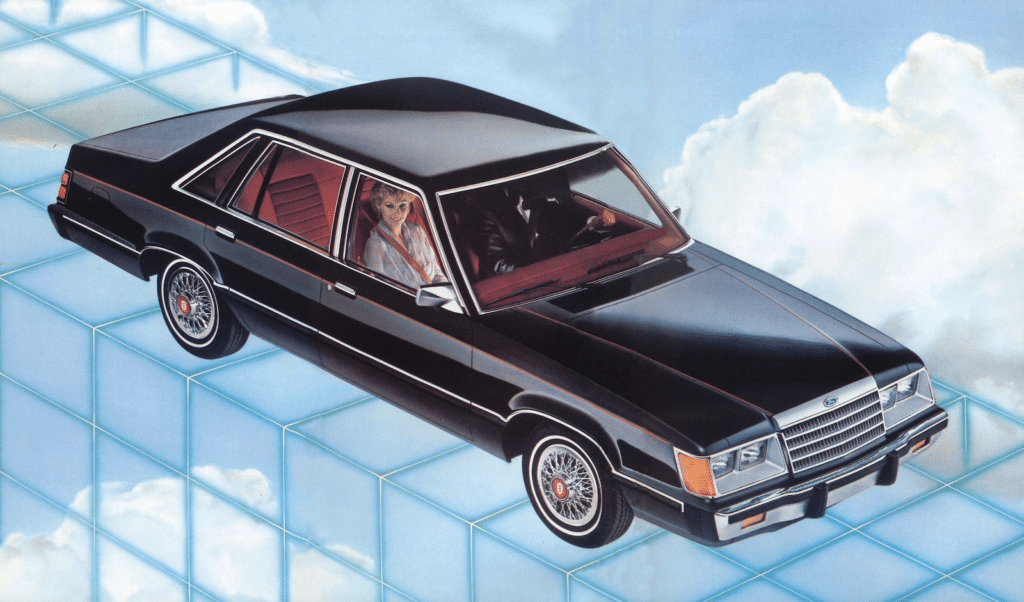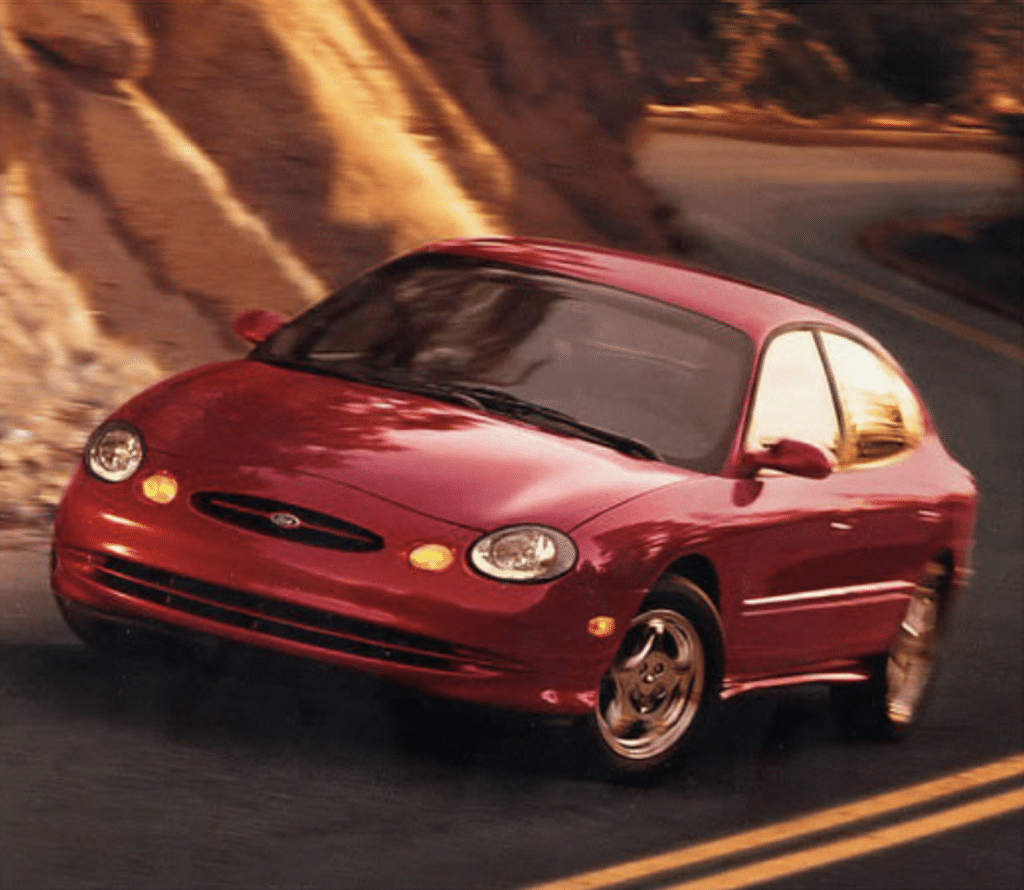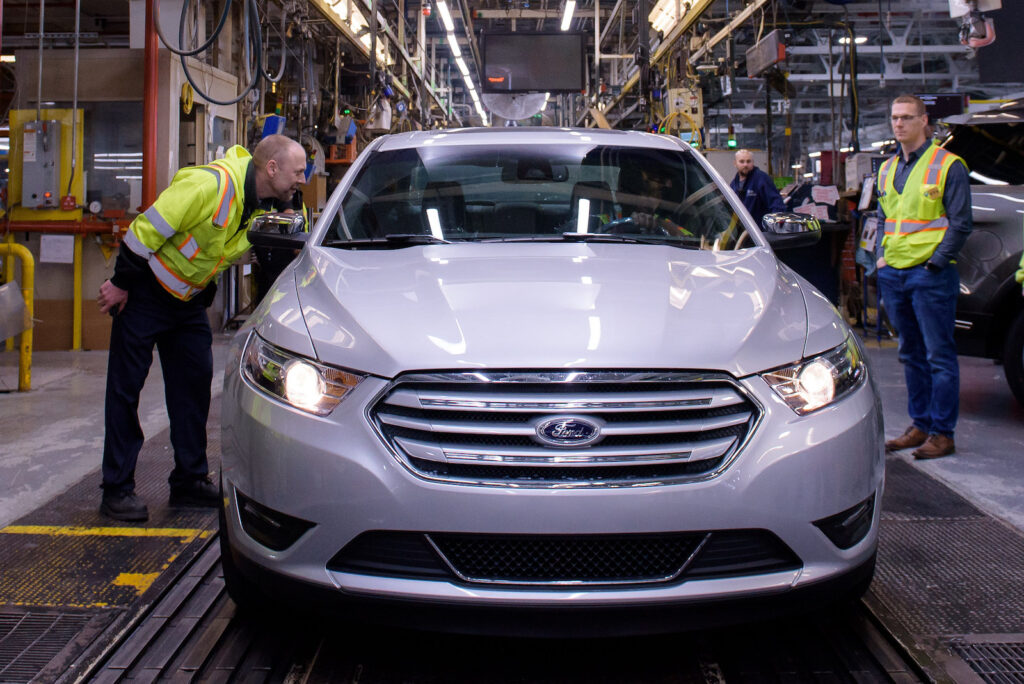The Rearview Mirror: The Car that Saved Ford Motor Co.

This week in 1985, Ford Motor Co. introduces its new midsize sedan, the 1986 Ford Taurus, along with its identical cousin, the Mercury Sable. More than 8 million Tauruses would follow during the next 34 years, making it Ford’s fifth-best-selling North American nameplate after the F-150, Escort, Model T, and Mustang.
The car’s cutting-edge aerodynamic shape comes at a time when cars boast boxy, knife-edged design. powered by a 140-horsepower 3.0-liter V-6, it is Ford’s first front-wheel-drive midsize sedan.
Priced from $9,645, it proves to be a triumph, one that saved the company. Yet ironically, the company squandered its success, allowing the once-loved nameplate to wither into irrelevance.
Born at a bad time
The story of the Ford Taurus begins in troubled times. High interest rates significantly depressed car sales, particularly larger cars, thanks to a second oil embargo. But other factors were depressing demand, particularly negative publicity regarding Ford Pintos, which suffered from a poorly designed fuel tank that ruptured when hit from behind, causing the cars to catch fire. With U.S. sales off 33%, and international sales down 26% Ford loses $1.5 billion, the beginning of a three-year stretch that saw the company lose $3.2 billion.
A $3 billion gamble

Ford President Donald Peterson knew something had to be done. Having spent his career in product planning, he knew Ford needed to break the habit of following in the shadow of General Motors’ design and eschew the inoffensive boxy designs the company had long produced.
He drove to the Ford Design Dome asked the designers if they liked the car they were creating. When they said no, Peterson told them to draw cars that they’d actually want to drive home. They were stunned; nothing like this had happened before. And it was no mere whim. Designer Jack Telnack and Team Taurus chief Lew Veraldi were given the authority to stretch beyond the typical Ford look by company CEO Phillip Caldwell, who had recently replaced Henry Ford II. Caldwell would periodically check in, asking the team, “have you gone far enough?”

Caldwell trusted Telnack and Veraldi; they had created the first Ford Fiesta in Europe when Caldwell was its chief. Now they were putting entrusted with a $3 billion program. Veraldi told friends that, “Phil Caldwell has trusted me with the last $3 billion Ford Motor Co. has.”
To hedge its bets, Ford continued production of the midsize Ford LTD, which was based on the old Ford Granada. But Ford needed the Taurus to succeed. If it didn’t, the company would have to file for Chapter 11 bankruptcy.
The Taurus arrives to critical acclaim
What they created was a midsize sedan with sleek, aerodynamic styling that looked European, not American. And it looked unlike any car Detroit was producing. But the styling gamble turned out to be a huge success, winning MotorTrend’s coveted “Car of the Year” award despite other CEOs sniping its styling. One such wag was Chrysler CEO — and former Ford president — Lee Iacocca, who said the Taurus resembled a “flying potato.”

But the car’s sales kept growing year after year, helping Ford’s U.S. market share grow from 19.2% in 1985 to 22.3% in 1989. It would become the bestselling car in America, receiving a modest facelift in 1992. Four years later, it would be redesigned.
Ford benchmarked the Toyota Camry, which had been redesigned for 1992 by the team that had created the first Lexus LS sedan. Built to a higher standard than its market segment required, Ford engineers were impressed. They used it as a guide for the new Taurus.
A turn in the road for a once-beloved nameplate
But a radically rounded 1996 styling missed the mark. Consumers didn’t find the car appealing, and the cost to build proved too high, especially after Ford used $2,000 rebates to ensure its continued popularity as America’s bestselling car in 1996. But the following year, the Toyota Camry was redesigned, with much of the cost taken out of it. Prices were lowered and it displaced the Taurus as America’s favorite car. Just behind it in second place was the Honda Accord. The Taurus placed third. America’s love affair with the car was over.

So too was Ford’s. The company did little to improve it, allowing it to languish until it was killed in 2006, squandering 20 years and hundreds of millions of dollars in brand equity.
But the name would resurface for the 2008 model year when Ford renamed its slow-selling Five Hundred full-size sedan the Taurus during a mid-cycle freshening. It would get a more extensive redesign in 2010 using the same platform. But American’s love affair with full-size sedans was waning, and for 2019, the Taurus would be axed yet again. The vehicle never recovered from its disastrous 1996 redesign or its decade of neglect.
But it will always be remembered for changing the course of American car design, wrenching the style lead from GM, while saving Ford Motor Co. from a possible bankruptcy.
Auto Lovers Land
Comments
Post a Comment